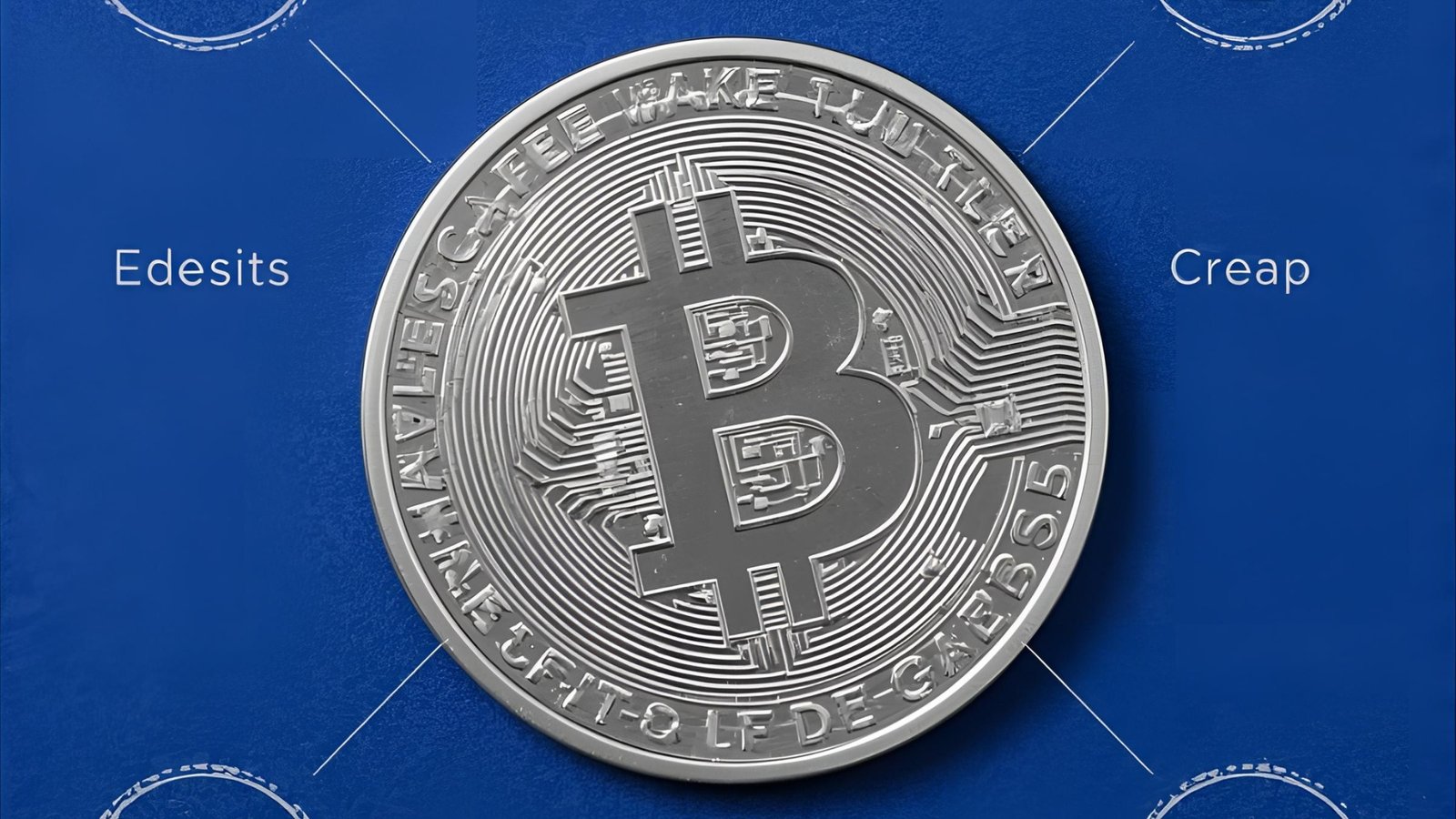Coinbase USDC yield opportunities have reached new heights with the platform’s strategic integration of decentralized finance (DeFi) protocols. This groundbreaking development allows users to earn impressive returns of up to 10.8% on their USDC holdings, marking a significant shift in how traditional crypto exchanges approach yield generation.
Coinbase USDC yield programs represent a bridge between centralized and decentralized finance, offering users the security of a regulated platform while accessing the higher returns typically associated with DeFi protocols. This innovative approach addresses the growing demand for passive income opportunities in the cryptocurrency space, particularly for stablecoin holders seeking consistent returns without the volatility associated with other digital assets.
The integration of DeFi protocols into Coinbase’s ecosystem demonstrates the platform’s commitment to providing competitive yield opportunities while maintaining the user-friendly experience that has made it a leading cryptocurrency exchange. Understanding how these Coinbase USDC yield programs work, their benefits, and potential risks is crucial for investors looking to maximize their stablecoin earnings.
How Coinbase Leverages DeFi for Enhanced USDC Returns
Understanding DeFi Integration for USDC Yield
Coinbase USDC yield programs utilize sophisticated DeFi protocols to generate higher returns than traditional savings accounts or even many high-yield savings products. The platform strategically deploys user funds across various decentralized lending protocols, liquidity pools, and yield farming opportunities to maximize returns while maintaining security standards.
The DeFi ecosystem offers numerous avenues for generating yield on stablecoins like USDC. These include lending protocols such as Compound and Aave, where users can earn interest by providing liquidity to borrowers. Additionally, automated market makers (AMMs) like Uniswap and Curve allow users to earn trading fees by providing liquidity to trading pairs.
Coinbase’s approach to DeFi yield farming involves careful selection of protocols based on security audits, track records, and risk assessments. This professional management removes the complexity and technical barriers that often prevent individual users from accessing DeFi opportunities directly.
Comparing Traditional vs DeFi-Enhanced USDC Yields
Traditional Stablecoin Earning Methods
Before DeFi integration, stablecoin rewards on centralized platforms typically ranged from 1-4% annually. These programs often relied on lending user funds to institutional borrowers or investing in traditional financial instruments, which limited the potential returns.
Traditional crypto earning methods included centralized lending programs, where exchanges would lend user funds to qualified borrowers and share a portion of the interest earned. While these programs offered stability and regulatory compliance, the returns were often modest compared to what DeFi protocols could provide.
The limitations of traditional approaches became apparent as DeFi protocols demonstrated the potential for significantly higher yields through innovative mechanisms like liquidity mining, yield farming, and automated market making.
DeFi Protocol Advantages for Higher Yields
DeFi yield farming protocols offer several advantages that enable higher returns on USDC holdings. These include automated yield optimization, access to multiple income streams simultaneously, and the ability to compound returns more efficiently.
Protocols like Yearn Finance and Convex Finance automatically optimize yield strategies by moving funds between different opportunities based on current market conditions. This dynamic approach ensures that Coinbase USDC yield programs can adapt to changing market conditions and maintain competitive returns.
The programmable nature of DeFi protocols also enables innovative yield strategies such as leveraged farming, where protocols can amplify returns through careful use of borrowed funds, though this approach carries additional risks that must be carefully managed.
Coinbase USDC Yield Program Features and Benefits

User-Friendly Access to Complex DeFi Strategies
One of the primary advantages of Coinbase USDC yield programs is their accessibility. Users can access sophisticated DeFi strategies without needing to understand complex protocols, manage multiple wallets, or navigate various DeFi platforms independently.
The platform handles all technical aspects including wallet management, transaction execution, and yield optimization. This removes barriers that might prevent less technical users from accessing DeFi yield farming opportunities directly.
Users benefit from professional portfolio management, where experienced teams optimize yield strategies based on current market conditions and risk assessments. This professional management often results in better returns than individual users might achieve independently.
Competitive Rates and Flexible Terms
Coinbase USDC yield programs offer competitive rates that often exceed traditional savings products and many other centralized crypto earning platforms. The 10.8% yield represents a significant improvement over traditional financial products, making it an attractive option for yield-seeking investors.
The programs typically offer flexible terms with various lock-up periods and withdrawal options. This flexibility allows users to choose options that align with their investment goals and liquidity needs.
Regular rate adjustments ensure that Coinbase USDC yield programs remain competitive with market conditions, providing users with consistently attractive returns on their stablecoin holdings.
Security Considerations and Risk Assessment
Smart Contract and Protocol Risks
While Coinbase USDC yield programs offer attractive returns, users should understand the associated risks. Smart contract vulnerabilities represent one of the primary concerns in DeFi-based yield programs, as bugs or exploits could potentially result in fund losses.
Coinbase mitigates these risks through careful protocol selection, regular security audits, and diversification across multiple tested protocols. However, users should recognize that DeFi protocols carry inherent risks that don’t exist in traditional financial products.
The platform’s risk assessment process evaluates factors including code quality, audit history, team reputation, and protocol governance structures before integrating new DeFi opportunities into Coinbase USDC yield programs.
Regulatory and Insurance Considerations
Stablecoin rewards programs operating in regulated jurisdictions must comply with various financial regulations. Coinbase’s regulatory compliance expertise helps ensure that USDC staking and yield programs meet applicable requirements while maintaining user protections.
Insurance coverage varies depending on the specific protocols used and risk levels involved. Users should review the terms and conditions of Coinbase USDC yield programs to understand what protections are in place and what risks they assume.
The regulatory landscape for DeFi continues to evolve, and platforms like Coinbase must adapt their programs to maintain compliance while preserving competitive yields for users.
Also Read: The Most Impactful DeFi Use Cases Transforming Finance in 2024
Market Impact and Industry Trends

Growing Adoption of Institutional DeFi
The success of Coinbase USDC yield programs reflects broader trends toward institutional adoption of DeFi protocols. Major financial institutions are increasingly recognizing the potential of decentralized finance to enhance traditional financial services.
This institutional involvement brings additional scrutiny, security standards, and regulatory compliance to DeFi protocols, potentially making them safer and more reliable for mainstream adoption.
The integration of DeFi by major platforms like Coinbase also helps legitimize these protocols and attracts additional capital, which can improve liquidity and stability across the ecosystem.
Competition and Market Development
Crypto earning opportunities are becoming increasingly competitive as platforms seek to attract and retain users. This competition drives innovation in yield generation strategies and often results in better terms for users.
The success of Coinbase USDC yield programs is likely to inspire similar offerings from other major exchanges, potentially leading to a broader ecosystem of accessible DeFi-based earning opportunities.
Market development in this space continues to accelerate, with new protocols and strategies regularly emerging to provide even better risk-adjusted returns for stablecoin holders.
Future Outlook and Potential Developments
Technological Improvements and Scalability
Future developments in DeFi yield farming technology could further enhance the efficiency and safety of programs like Coinbase USDC yield. Layer 2 solutions and improved smart contract security could reduce costs and risks while maintaining high returns.
Cross-chain DeFi protocols may also expand opportunities by allowing access to yield opportunities across multiple blockchain networks, potentially improving diversification and returns.
Automated risk management systems and artificial intelligence applications could further optimize yield strategies and improve risk-adjusted returns for users.
Regulatory Evolution and Market Maturation
The regulatory environment for stablecoin rewards and DeFi integration continues to develop. Clear regulatory frameworks could provide additional certainty and potentially unlock even more opportunities for platforms like Coinbase.
Market maturation in the DeFi space may lead to more stable and predictable yields, though potentially at somewhat lower average returns as the market becomes more efficient and competitive.
The evolution of traditional financial institutions into DeFi could create new hybrid products that combine the best aspects of traditional finance with DeFi innovation.
Getting Started with Coinbase USDC Yield Programs
Account Setup and Requirements
To access Coinbase USDC yield opportunities, users typically need to complete standard account verification processes including identity verification and compliance checks. These requirements ensure regulatory compliance and platform security.
Minimum investment amounts and fee structures vary depending on the specific program. Users should review current terms and conditions to understand requirements and costs associated with USDC staking programs.
The platform’s user interface is designed to make accessing crypto earning opportunities straightforward, with clear information about rates, terms, and risks associated with each program.
Best Practices for Maximizing Returns
To optimize Coinbase USDC yield earnings, users should consider factors such as investment duration, market timing, and portfolio diversification. Understanding how yields fluctuate with market conditions can help inform investment decisions.
Regular monitoring of program performance and available alternatives ensures that users maintain optimal yield strategies as market conditions change. The dynamic nature of DeFi means that optimal strategies may evolve over time.
Risk management remains crucial even with professionally managed programs. Users should only invest amounts they can afford to hold for the program duration and should understand the potential for yield fluctuations.
Conclusion
Coinbase USDC yield programs represent a significant evolution in cryptocurrency earning opportunities, successfully bridging the gap between traditional finance and decentralized protocols. With yields reaching up to 10.8%, these programs offer compelling alternatives to traditional savings products while maintaining the security and user experience that Coinbase users expect.
The integration of DeFi yield farming strategies into mainstream platforms marks a crucial step toward broader adoption of decentralized finance. As the technology matures and regulatory frameworks develop, we can expect continued innovation in stablecoin rewards programs and crypto earning opportunities.
For investors seeking to maximize their USDC holdings, exploring Coinbase USDC yield programs offers an opportunity to benefit from professional DeFi management while avoiding the complexity of direct protocol interaction. However, success requires understanding both the opportunities and risks involved in decentralized finance applications.


